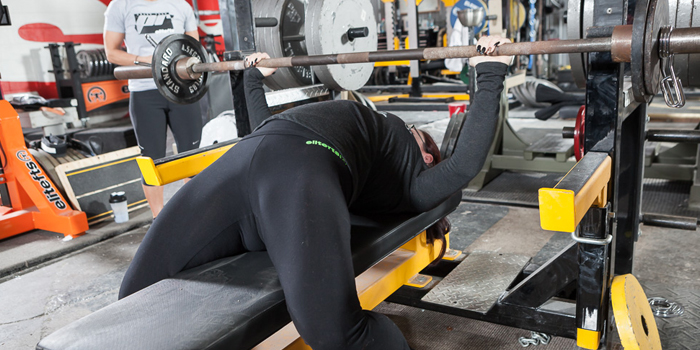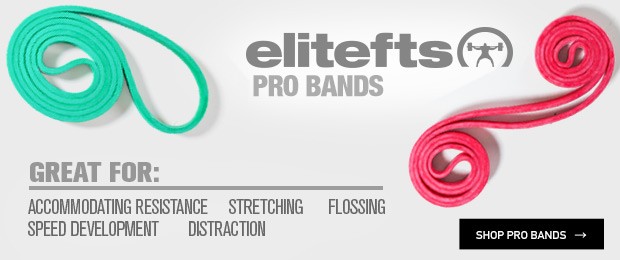
Want to hit a new PR in your next bench session? I bet you do! In this article, I will give you some tips I have used many times over to help lifters hit a new PR. Of course, I can not give a full guarantee this will work for every lifter. If you are a flat back, beat up, injured, or an overtrained lifter then it may not help in one session. If your technique is horrible then that will definitely affect the results of these tips. This advice has worked time and time again with lifters willing to give it a full shot. It can work for you as well.
Tip 1: Take a Week Off
The first tip is to take a week off benching. Now not every lifter needs this but most lifters will benefit from a week of no benching (even if they still train). I have never in life seen a deload week hurt a lifter physically. It'll benefit you. The problem is when the meathead ego mentality of some lifters. You don't have to always lift more. It is easy to get caught up in the idea that you must bench and bench often to increase your bench. Remember, we get stronger when we recover from training, not during the training.
Tip 2: Stay Mobile and Flexible
Now let's get to the meat of things. There are many factors when it comes to how much weight you can lift. One of these major factors is the position of your body. Part of this is then correlated with knowing the correct technique, but it is also the ability to get your body in these positions. Are you giving thought to mobility and flexibility to get into the correct positions?
RECENT: Lift with Intent and Intensity
In the bench press, flexibility and mobility of the whole back, the chest, and the anterior delts are very crucial. Getting the biggest arch you can, allows you to get your shoulders in a safer, stronger, and more efficient position. So, working the flexibility of your back is worth the effort. You must also get your shoulder blades retracted as much as possible while depressing the shoulders. Again, this helps to put your shoulders in the safest, strongest, and efficient position. If I am trying to retract my shoulder blades but my chest and anterior delts are tight, then I will not be able to retract to my body’s full potential. In fact, I have seen lifters so tight they can hardly retract at all. There is strength and weight in mobility and flexibility.
I have four simple and easy stretches that can help increase flexibility in these key areas for the bench. It does not really matter what order you do these in so I am just going to pick the superman stretch to start with.
Superman
Lay on the floor face down and start by resting up on your elbows. Hopefully, this position does not stretch too much. If it does, rest there for a minute. Next, you will do push-ups while keeping your hips on the floor. Push up as high as you can go while keeping your hips on the floor. Next, let yourself back down and repeat this eight to ten times, trying to push a little higher each time. Rest on the elbows for another minute then push up as high as you can and hold that for a minute, feeling the low back stretch. You can run through this a few times if needed. If you root your hands into the floor depressing the shoulders while retracting the shoulder blades, you will get a more intense stretch in the low back.
Chest Stretch
There are many different ways to stretch the chest. I am only going to focus on the one I get the best results from. This stretch can be done with a wood dowel, PVC, a towel, or a band (my favorite). I personally use the elitefts average band for this stretch.
Start with a wider than a shoulder-width grip holding the band in front of you at shoulder height. Raise the band over your head and then work your arms back behind you. The band will stretch. Allow your arms to move apart if needed but some people may still find this too tight. When this is the case, start over with the hands further apart. I will raise my arms up and behind my head until I begin to feel the stretch. At this point, I will hold that for about thirty seconds, letting the chest stretch. Then I will try to move my arms further backward and down. Stop every three to five inches for a 30-second hold. You want to go through the whole range of motion all the way until the band touches the glutes. Then slowly work your way back up doing the 30-second hold every three to five inches. It is important to try to keep the shoulders depressed and also reach back away from the body as much as possible. This stretch can be very annoying to do, especially if you are super tight. Just keep focusing on how much more you will bench and how much it will help ward off injuries.
Thoracic Spine Flexibility
We will next move on to some thoracic spine flexibility. I prefer to do with a half yoga barrel but it can be used with a foam roller or large diameter PVC length. Start by sitting on the floor against the barrel with your knees in a sit-up position. Lift your hips up until your thoracic spine is on the top of the half barrel. Basically, this should be in the middle of your scapula. Now raise your arms over your head into a Y position. Let those arms and spine stretch over that barrel for about 30 seconds. Then you will slowly lower your hips while trying to keep your arms up. You're trying to let your thoracic spine round over the barrel. Go through this procedure a few times while moving just slightly up or down, looking for the area you feel the best stretch in your thoracic spine.
Thoracic and Cervical Pivots
Lastly, we will move to thoracic and cervical pivots. This is something I learned about during my younger years working in physical therapy. They are basically foam and vinyl cushions shaped in a way so you can lay on them to stretch. You will lay on the thoracic pivot with it in between the shoulder blades. The cervical pivot will go under the base of the cranium where it feels comfortable. Then you will place your arm in the ninety-ninety position. Meaning arms out at ninety degrees from the body and the elbow bent at ninety degrees. Then you simply lay there for five to seven minutes, relaxing the arms and stretching the upper anterior of the body. Since pivots are a little bit expensive, the blue-collar way to do this is with a tightly rolled-up towel. I like a towel that when rolled up is about ten to twelve inches in length and three inches in diameter. It will smash down after you lay on it. Start with this size and adjust your needs as you become more flexible. This is my favorite stretch because I just lay there being lazy but as soon as I stand up I feel the change.
Conclusion
I will be the first one to say stretching sucks and it is boring as hell! But, I always feel better afterward though. I also attribute a lot of my success in powerlifting and strength sports to my flexibility. It allowed me to get in the perfect positions for the lifts. It helped me avoid injury, too. I know for a fact I walked away from some seriously bad squat crashes because of my flexibility. It helped ward off muscle hypertension while also helping with recovery.
The truly hardcore lifters do what they know will help no matter how much it sucks or how boring it is. If you're willing to be hardcore and give these stretches an honest effort, you will have a great bench training session. If you stick with them and do them regularly you see even more benefits (and PRs).
Chad Aichs is a world-class and elite powerlifter in the SHW division. He began training seriously for powerlifting in 1999 in Sparks, Nevada, where he still currently trains at American Iron Gym. In the ten years since he started, Aichs has proven to be one of the strongest lifters in the world. His best lifts are an 1173 squat, 821 bench press, and a 755 pull. Aichs' best total is 2733, which makes him one of the top lifters of all time.










